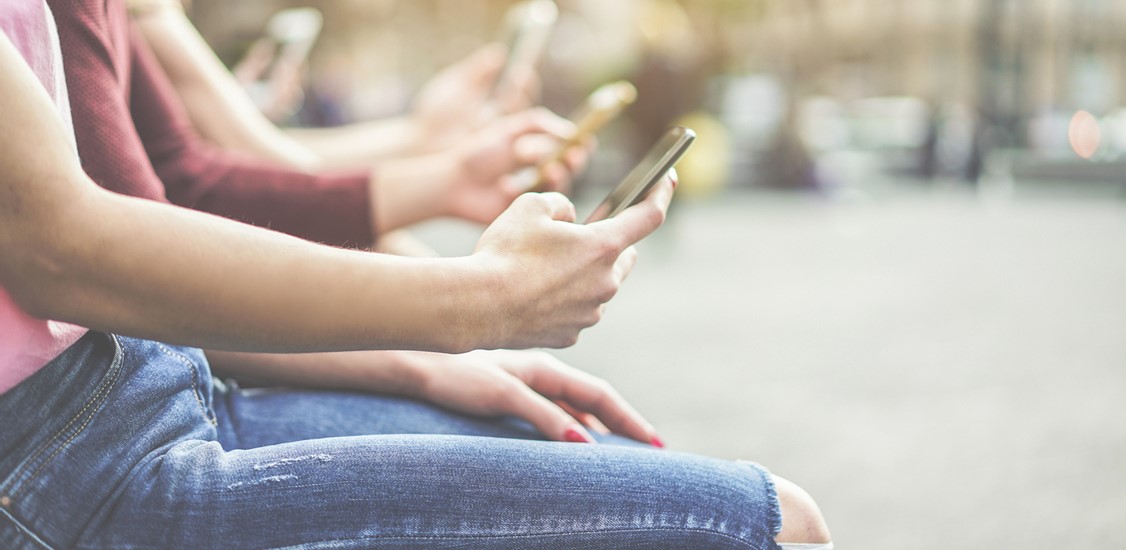Even before the pandemic, reliance on smartphones was high. Consumers have outsourced communications, entertainment and directions to the devices they carry in their pockets. Mobile devices are a staple of daily life that most can’t leave home without.
When the COVID-19 pandemic hit and greatly changed in-person interactions, people found ways to remain well connected through their mobile devices. While mostly stuck at home during the pandemic year (March 2020 - March 2021), consumers used their smartphones an average of four hours per day - up ten minutes more per day when compared to mobile usage pre-pandemic. The way consumers used their mobile devices changed too; in fact, they spent more time on apps during the pandemic in the following categories: finance/trading (up 63%), social media (25%), lifestyle (19%), video (12%) and gaming (6%)1.
Smartphone usage, trends and data can reveal an incredible amount about consumers and reflect societal trends when analyzed at large. Here are the top five ways the pandemic changed consumers’ smartphone behavior.
Financial app usage told two very different stories
As the economy fluctuated, people flocked to finance apps, increasing timespent on them by 63% during the pandemic year. While every generation increased time spent on finance apps, Gen Z led the charge more than doubling the amount of time they spent checking out their finances (102%) and, in particular, their investments (127%). Mobile trading apps, including those that enabled consumers to trade cryptocurrencies, accounted for 35% of time spent by all consumers on finance apps during the pandemic year. One trading app of particular note, Robinhood, experienced a 183% increase in the amount of time consumers spent using the app.
Despite the significant uptick in financial mobile app usage, not all of it represented financial prosperity. A dramatic increase in food stamp app mobile usage reflected the financial hardship many Americans felt during COVID-19 as time spent on Fresh EBT increased 152% during the pandemic.
Food delivery and shopping apps became daily staples
During the pandemic year, Americans also turned to lifestyle apps such as food delivery services and online shopping to weather quarantine periods. As indoor dining was reimagined and people were told to stay home, consumers relied on DoorDash and UberEats to ensure they were able to still eat from their favorite restaurants, with time spent increasing 166% and 121% respectively. Similarly, people needed their shopping fix without entering a store. As such, time spent on the Walmart app during the pandemic was up 74% along with the Target app 62%, and the Amazon Shopping app 58%.
Gen Z leaned into these apps more than other generations spending 50% more time on lifestyle apps during the pandemic year while the other age groups averaged a 17% increase. Many new consumers realized the pleasure of having food and other household necessities delivered to their doorsteps or available for same-day, touchless pickup. It saved them from running other tedious errands and created a behavioral shift that could endure beyond the pandemic in the name of convenience.
Gaming brought consumers together
Multiplayer online gaming also served as a much-needed connection point for consumers across the country during the early days of the work from home mandate, as consumers played video games an average of 41 minutes per day on their smartphones.
Two specific mobile gaming apps - Among Us, ROBLOX - saw dramatic increases in both the total number of hours played and average daily minutes played per user during the pandemic. At the same time, Discord, a voice, text and video messaging app designed to connect gamers, saw users spend 18% more minutes chatting per day during the pandemic - possibly part of the reason for Microsoft’s rumored interest in the company.
TikTok dances took over social media trends
Consumers have always used social platforms as a way to stay informed, connected and as a source of entertainment. However, social media usage skyrocketed during the pandemic year. Time spent among all consumers on social media apps increased by 25% and accounted for the most amount of time consumers spent on their phones - more than an hour per day.
Time spent on TikTok skyrocketed, increasing nearly four times (380%) during the pandemic. Everyone from A-list celebs to social media influencers, to regular people and families uploaded their dance challenge takes and tried their hand at going viral on TikTok during the pandemic year. While the app was popular before the pandemic, COVID challenges like “Bored in the House” and “The Hand Wash” alongside other popular (and difficult to learn) dance challenges made TikTok the must-have pandemic social media app.
Video apps took off
Consumers turned to video streaming services to get their exercise, cooking lessons, discover new music, and binge-watch TV shows and movies. Americans watched nearly 42 minutes of video per day on their mobile devices during the pandemic, with growth in time spent on video apps paced by Gen Z (up 44%) and Baby Boomers (up 10%).
Streaming services, in particular, saw dramatic gains. Popular shows such as The Queen’s Gambit and Tiger King became must-see TV, driving traffic to mobile video apps. From its May 2020 launch, time spent on HBO Max increased 513% while total time spent on Disney+ grew 92% during the pandemic. Free streaming platforms such as Tubi, YouTube and Pluto TV all saw increases in usage as well.
It’s not hard to see that during the COVID-19 pandemic, smartphones became even more important to consumers - they enabled consumers to stay in touch with friends they wouldn't be able to see for a year; they offered an escape from the disturbing new reality with sources of entertainment such as video streaming and gaming; and they enabled consumers to maintain a certain level of productivity to keep their working lives in order. In a recent survey2, consumers were asked what was the one product or service that they would keep during the COVID-19 stay-at-home mandate, as you might expect the overwhelming top choice was their smartphone.
All around the world, people relied on their mobile devices to adapt to the new normal. In a year of uncertainty, mobile devices were solidified as an integral resource in consumers’ day to day lifestyle.
1) All data in this article stems from Global Wireless Solutions’ ‘The Pandemic Year in Mobile Apps’ Report
2) Global Wireless Solutions’ U.S. Consumer Research Survey - Teleworking During the Pandemic






















